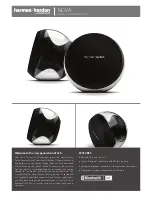
www.miinet.com
Moore Industries-International, Inc.
- 20 -
User’s Manual
225-748-01L
February 2017
Programmable Current/Voltage Safety Trip Alarm
STA
HLPRG
SEC
TION 3
Recommended Ground Wiring Practices
Moore Industries recommends the following ground wiring practices:
•
Any Moore Industries product in a metal case or housing should be grounded.
• The protective earth conductor must be connected to a system safety earth ground before
making other connections.
•
All input signals to, and output signals from, Moore Industries’ products should be wired
using a shielded, twisted pair wiring technique. Shields should be connected to an earth or
safety ground.
•
For the best shielding, the shield should be run all the way from the signal source to the
receiving device. (see Note below)
•
The maximum length of un-shielded input and output signal wiring should be 2 inches.
Note:
Some of Moore Industries’ instruments can be classified as receivers (IPT
2
, IPX
2
, etc.)
and some can be classified as transmitters (TRX, TRY, etc.) while some are both a receiver and
a transmitter (SPA
2
, HIM, etc.). Hence, your shield ground connections should be appropriate for
the type of signal line being shielded. The shield should be grounded at the receiver and not at
the signal source.
CE Certification-related Guidelines
Installation of any Moore Industries’ products that carry the CE marking must adhere to the
guidelines in the Recommended Ground Wiring Practices section in order to meet the EN 61326
requirements set forth in the applicable EMC directive.
The Low Voltage Directive also applies to the AC powered versions of the STA and/or when
connecting any of its output relay contacts to voltages greater than 50 vac. In order to comply
with EN61010-1 (Low Voltage Directive) all guidelines in this section must be followed.
Contact/Load Suppression
When the instrument relays are used to switch an inductive load such as an external relay coil,
contactor, solenoid, large voltage spikes may be created in nearby cable harnesses. When
excessive, these voltage spikes can disrupt the operation of all nearby electronics including this
product. Inductive loads should have suppression devices installed at the load (for external
relays this would be right across the relay coil itself). Usually this is a simple diode for dc
circuits. AC circuits routinely use an R-C snubber. Please follow the external load manufacturer
instructions for their recommended suppression kits
.
















































